File 03 Home * Cut Copy Paste ✓ L Insert Format Painter Clipboard 1 ] A Ą Draw Design Layout References Document1 - Word Table Tools Rosalia Channiel Acol RC F Mailings Review View Help Table Design Layout Tell me what you want to do Times New Romar ▾ 8 A A Aa ▾ ་་ AaBbCcDd AaBbCcDd AaBbC AaBbCct AaB AaBbCcDd AaBbCcDd AaBbCcDd Find く ab Replace BIU abe X₂ x² A▾ ab v A v H 1 Normal 1 No Spac... Heading 1 Heading 2 Title Subtitle Subtle Em... Emphasis Font Paragraph 2. 3 Styles ། Select ▾ Editing 5 Cues Nursing Diagnosis Analysis Planning Intervention Rationale Evaluation Subjective Cues: "Hindi ako makagalaw ng maayos dahil namamanhid ang kanang bahagi ng katawan ko" as verbalized by patient. Objective Cues: • (+) Right body weakness Decreased range of • motion • Vital signs: BP: 130/90 mmHg PR: 74 bpm RR: 16 CR Temp: 36.8 °C Spo2: 99% Impaired Physical Mobility related to physical deconditioning as evidenced by hemiparesis secondary to cardiovascular disease Scientific Analysis: The ability to engage in activities such as walking and cycling is associated with favorable CVD risk profiles. Ben, G. W., RN. (2024, March 4). Physical Mobility & Immobility Nursing care plan and management. Nurseslabs. Situational Analysis: Situational Analysis: The patient is experiencing impaired physical mobility, particularly on the right side of their body, due to numbness. This is likely caused by hemiparesis, a weakness or paralysis on one side of the body, which is secondary to cardiovascular disease. The decreased range of motion further complicates their ability to move freely. Additionally, the patient is unable to perform daily activities normally, which could be due to the combination of hemiparesis and physical deconditioning. Short-term goal: (Independent) Cognitive: Psychomotor: (Collaborative) Page 1 of 3 191 words 区 Accessibility: Good to go 30°C Q Search Clear Co 0. Affective: (Dependent) >. 3 | 00 E 0 Add-ins 晶 Add-ins O ☑ 8:58 PM 4/21/2024 130% PRE
File 03 Home * Cut Copy Paste ✓ L Insert Format Painter Clipboard 1 ] A Ą Draw Design Layout References Document1 - Word Table Tools Rosalia Channiel Acol RC F Mailings Review View Help Table Design Layout Tell me what you want to do Times New Romar ▾ 8 A A Aa ▾ ་་ AaBbCcDd AaBbCcDd AaBbC AaBbCct AaB AaBbCcDd AaBbCcDd AaBbCcDd Find く ab Replace BIU abe X₂ x² A▾ ab v A v H 1 Normal 1 No Spac... Heading 1 Heading 2 Title Subtitle Subtle Em... Emphasis Font Paragraph 2. 3 Styles ། Select ▾ Editing 5 Cues Nursing Diagnosis Analysis Planning Intervention Rationale Evaluation Subjective Cues: "Hindi ako makagalaw ng maayos dahil namamanhid ang kanang bahagi ng katawan ko" as verbalized by patient. Objective Cues: • (+) Right body weakness Decreased range of • motion • Vital signs: BP: 130/90 mmHg PR: 74 bpm RR: 16 CR Temp: 36.8 °C Spo2: 99% Impaired Physical Mobility related to physical deconditioning as evidenced by hemiparesis secondary to cardiovascular disease Scientific Analysis: The ability to engage in activities such as walking and cycling is associated with favorable CVD risk profiles. Ben, G. W., RN. (2024, March 4). Physical Mobility & Immobility Nursing care plan and management. Nurseslabs. Situational Analysis: Situational Analysis: The patient is experiencing impaired physical mobility, particularly on the right side of their body, due to numbness. This is likely caused by hemiparesis, a weakness or paralysis on one side of the body, which is secondary to cardiovascular disease. The decreased range of motion further complicates their ability to move freely. Additionally, the patient is unable to perform daily activities normally, which could be due to the combination of hemiparesis and physical deconditioning. Short-term goal: (Independent) Cognitive: Psychomotor: (Collaborative) Page 1 of 3 191 words 区 Accessibility: Good to go 30°C Q Search Clear Co 0. Affective: (Dependent) >. 3 | 00 E 0 Add-ins 晶 Add-ins O ☑ 8:58 PM 4/21/2024 130% PRE
Phlebotomy Essentials
6th Edition
ISBN:9781451194524
Author:Ruth McCall, Cathee M. Tankersley MT(ASCP)
Publisher:Ruth McCall, Cathee M. Tankersley MT(ASCP)
Chapter1: Phlebotomy: Past And Present And The Healthcare Setting
Section: Chapter Questions
Problem 1SRQ
Related questions
Question
Complete the nursing care plan below
![File
03
Home
* Cut
Copy
Paste
✓
L
Insert
Format Painter
Clipboard
1
]
A Ą
Draw Design Layout References
Document1 - Word
Table Tools
Rosalia Channiel Acol
RC
F
Mailings Review
View
Help
Table Design
Layout
Tell me what you want to do
Times New Romar ▾ 8
A A Aa ▾
་་
AaBbCcDd AaBbCcDd AaBbC AaBbCct AaB AaBbCcDd AaBbCcDd AaBbCcDd
Find
く
ab Replace
BIU abe X₂ x²
A▾ ab v A
v
H
1 Normal
1 No Spac... Heading 1
Heading 2 Title
Subtitle Subtle Em... Emphasis
Font
Paragraph
2.
3
Styles
།
Select ▾
Editing
5
Cues
Nursing
Diagnosis
Analysis
Planning
Intervention
Rationale Evaluation
Subjective Cues:
"Hindi ako makagalaw ng
maayos dahil namamanhid ang
kanang bahagi ng katawan ko"
as verbalized by patient.
Objective Cues:
•
(+) Right body
weakness
Decreased range of
•
motion
•
Vital signs:
BP: 130/90 mmHg
PR: 74 bpm
RR: 16 CR
Temp: 36.8 °C
Spo2: 99%
Impaired Physical
Mobility related to
physical deconditioning as
evidenced by hemiparesis
secondary to
cardiovascular disease
Scientific Analysis:
The ability to engage in activities such as walking and cycling is
associated with favorable CVD risk profiles. Ben, G. W., RN.
(2024, March 4). Physical Mobility & Immobility Nursing care
plan and management. Nurseslabs.
Situational Analysis:
Situational Analysis:
The patient is experiencing impaired physical mobility, particularly
on the right side of their body, due to numbness. This is likely
caused by hemiparesis, a weakness or paralysis on one side of the
body, which is secondary to cardiovascular disease. The decreased
range of motion further complicates their ability to move freely.
Additionally, the patient is unable to perform daily activities
normally, which could be due to the combination of hemiparesis and
physical deconditioning.
Short-term
goal:
(Independent)
Cognitive:
Psychomotor:
(Collaborative)
Page 1 of 3
191 words 区
Accessibility: Good to go
30°C
Q Search
Clear
Co
0.
Affective:
(Dependent)
>.
3 |
00
E
0
Add-ins
晶
Add-ins
O
☑
8:58 PM
4/21/2024
130%
PRE](/v2/_next/image?url=https%3A%2F%2Fcontent.bartleby.com%2Fqna-images%2Fquestion%2F6bbcd80b-c3c7-4c20-8bd2-407fb98627e7%2F9eee1f38-d6b6-43aa-b723-2a7346eabdcc%2Fe72xu2_processed.png&w=3840&q=75)
Transcribed Image Text:File
03
Home
* Cut
Copy
Paste
✓
L
Insert
Format Painter
Clipboard
1
]
A Ą
Draw Design Layout References
Document1 - Word
Table Tools
Rosalia Channiel Acol
RC
F
Mailings Review
View
Help
Table Design
Layout
Tell me what you want to do
Times New Romar ▾ 8
A A Aa ▾
་་
AaBbCcDd AaBbCcDd AaBbC AaBbCct AaB AaBbCcDd AaBbCcDd AaBbCcDd
Find
く
ab Replace
BIU abe X₂ x²
A▾ ab v A
v
H
1 Normal
1 No Spac... Heading 1
Heading 2 Title
Subtitle Subtle Em... Emphasis
Font
Paragraph
2.
3
Styles
།
Select ▾
Editing
5
Cues
Nursing
Diagnosis
Analysis
Planning
Intervention
Rationale Evaluation
Subjective Cues:
"Hindi ako makagalaw ng
maayos dahil namamanhid ang
kanang bahagi ng katawan ko"
as verbalized by patient.
Objective Cues:
•
(+) Right body
weakness
Decreased range of
•
motion
•
Vital signs:
BP: 130/90 mmHg
PR: 74 bpm
RR: 16 CR
Temp: 36.8 °C
Spo2: 99%
Impaired Physical
Mobility related to
physical deconditioning as
evidenced by hemiparesis
secondary to
cardiovascular disease
Scientific Analysis:
The ability to engage in activities such as walking and cycling is
associated with favorable CVD risk profiles. Ben, G. W., RN.
(2024, March 4). Physical Mobility & Immobility Nursing care
plan and management. Nurseslabs.
Situational Analysis:
Situational Analysis:
The patient is experiencing impaired physical mobility, particularly
on the right side of their body, due to numbness. This is likely
caused by hemiparesis, a weakness or paralysis on one side of the
body, which is secondary to cardiovascular disease. The decreased
range of motion further complicates their ability to move freely.
Additionally, the patient is unable to perform daily activities
normally, which could be due to the combination of hemiparesis and
physical deconditioning.
Short-term
goal:
(Independent)
Cognitive:
Psychomotor:
(Collaborative)
Page 1 of 3
191 words 区
Accessibility: Good to go
30°C
Q Search
Clear
Co
0.
Affective:
(Dependent)
>.
3 |
00
E
0
Add-ins
晶
Add-ins
O
☑
8:58 PM
4/21/2024
130%
PRE
Expert Solution
This question has been solved!
Explore an expertly crafted, step-by-step solution for a thorough understanding of key concepts.
Step by step
Solved in 2 steps

Recommended textbooks for you
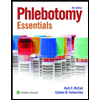
Phlebotomy Essentials
Nursing
ISBN:
9781451194524
Author:
Ruth McCall, Cathee M. Tankersley MT(ASCP)
Publisher:
JONES+BARTLETT PUBLISHERS, INC.
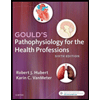
Gould's Pathophysiology for the Health Profession…
Nursing
ISBN:
9780323414425
Author:
Robert J Hubert BS
Publisher:
Saunders

Fundamentals Of Nursing
Nursing
ISBN:
9781496362179
Author:
Taylor, Carol (carol R.), LYNN, Pamela (pamela Barbara), Bartlett, Jennifer L.
Publisher:
Wolters Kluwer,

Phlebotomy Essentials
Nursing
ISBN:
9781451194524
Author:
Ruth McCall, Cathee M. Tankersley MT(ASCP)
Publisher:
JONES+BARTLETT PUBLISHERS, INC.

Gould's Pathophysiology for the Health Profession…
Nursing
ISBN:
9780323414425
Author:
Robert J Hubert BS
Publisher:
Saunders

Fundamentals Of Nursing
Nursing
ISBN:
9781496362179
Author:
Taylor, Carol (carol R.), LYNN, Pamela (pamela Barbara), Bartlett, Jennifer L.
Publisher:
Wolters Kluwer,
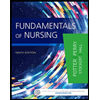
Fundamentals of Nursing, 9e
Nursing
ISBN:
9780323327404
Author:
Patricia A. Potter RN MSN PhD FAAN, Anne Griffin Perry RN EdD FAAN, Patricia Stockert RN BSN MS PhD, Amy Hall RN BSN MS PhD CNE
Publisher:
Elsevier Science
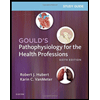
Study Guide for Gould's Pathophysiology for the H…
Nursing
ISBN:
9780323414142
Author:
Hubert BS, Robert J; VanMeter PhD, Karin C.
Publisher:
Saunders
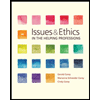
Issues and Ethics in the Helping Professions (Min…
Nursing
ISBN:
9781337406291
Author:
Gerald Corey, Marianne Schneider Corey, Cindy Corey
Publisher:
Cengage Learning